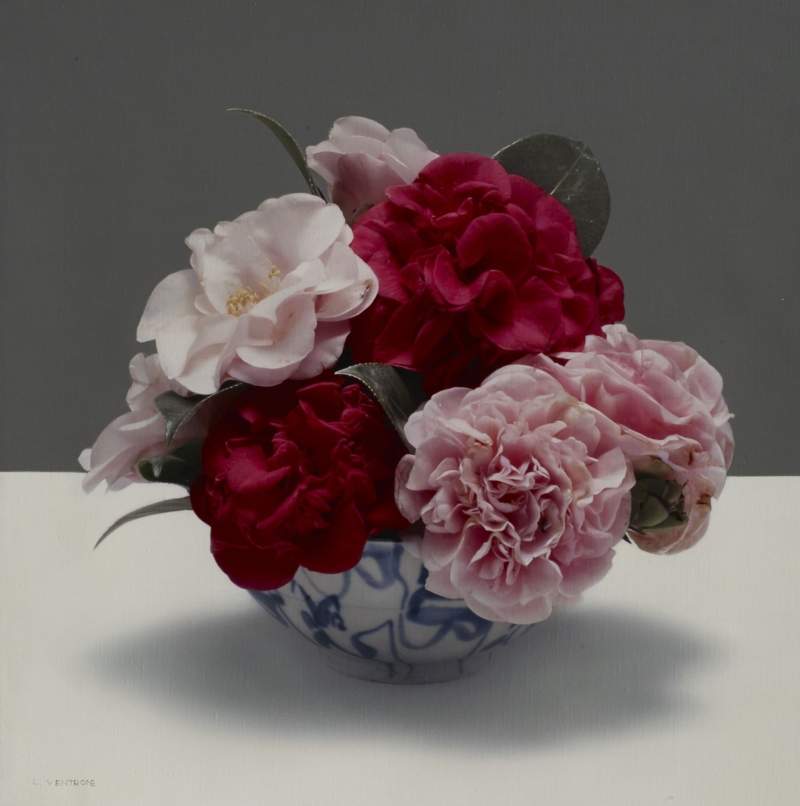Six years later, an exhibition-event dedicated to the works of Luciano Ventrone returns to Umbria. From Feb. 10 to March 24, the monumental church of San Francesco in Gualdo Tadino will host Luciano Ventrone - First and Last Act, thirty masterpieces by the master whom Federico Zeri called "the Caravaggio of the 20th century." The posthumous retrospective chronicles the artistic journey of Ventrone, who passed away in 2021. It contains his first painting, which he made at the age of 14, and the last one, missing the signature, which the artist was completing in his house-museum in Collelongo, in the province of L’Aquila, both on display for the first time. The exhibition is sponsored by the Ventrone-Gibilisco Foundation under the patronage of Polo Museale Città di G ualdo Tadino and the Municipality of Gualdo Tadino, and with contributions from the Region of Umbria and Northeast Umbria Museums and Territories.
“Ventrone is not only one of the greatest and best-known figure painters internationally, but first and foremost he is a scientist of painting, and ever since the representations of cells in the 1960s, enlarged under a microscope, works later made available to neurology texts, he has been refining his own ancient painting technique of patient oil glazing, comparing it with the more advanced technologies that today allow us to look and see ’more’ beyond the real,” analyzes Cesare Biasini Selvaggi, cultural manager and journalist at Skira, which publishes the catalog Luciano Ventrone - Catalogo ragionato dell’opera pittorica 1956-2021.
Luciano Ventrone is among the most internationally known Italian artists. His works have been exhibited in famous museums and galleries including those in Rome, Milan, London, Moscow, St. Petersburg and, until last January, New York and Singapore.
"The decision to propose this retrospective in Gualdo Tadino, after the great success of the 2018 exhibition Meraviglia ed Estasi, also stems from the fact that the Umbrian town is home to Matteo da Gualdo (c. 1435-1507), considered a forerunner of still lifes with his famous panel L’Albero di Jesse, a pictorial genre of which Ventrone was a great innovator," stresses Polo Museale director Catia Monacelli.
Luciano Ventrone was born in Rome to parents from Campania. He has practically always been painting. “I am convinced,” he said in 1983 in an interview, “that this belonging of mine to the world of art is an atavistic fact, a natural election felt, perhaps, in the womb of some of my ancestors. I think I can thus explain this early participation of mine in the facts of art.”
In 1956 dates the rare exhibition testimony to his early talent, a landscape painting Untitled made from a postcard, exhibited to the public for the first time.
Luciano Ventrone has always defined himself as an abstractionist grappling with reality, a metaphysician forced to measure himself against the transience of nature. From his beginnings as a classical figurative painter to geometric experiments, through informal and programmed art, this retrospective surveys Ventrone’s long career. His is a long apprenticeship full of digressions, on the wave of the various currents of Italian painting and in the temperaments of the Second Postwar period, which finally allows him to land with increasing force in an icy hyperrealism in which the foundations of painting (form, light, color) are put at the service of a Platonic philosophical conception aimed at revealing the world of prime ideas.
Since the nineties of the twentieth century, especially still lifes are no longer and only the representation of reality, a mimetic effort albeit worthy of praise, if anything, the successful attempt, thanks to a talent cultivated daily with effort, to go beyond reality and experience “the limit of truth,” that is, that thin line that distances us from actual knowledge, moving away from real objects and approaching as far as possible the abstraction of “things.”
Luciano Ventrone was born in Rome in 1942, where he attended art high school and, after graduating in 1964, enrolled in the Faculty of Architecture, which he attended until 1968, when he decided to abandon his studies to devote himself entirely to painting. The path of his artistic practice, spanning almost sixty years, starts from his beginnings with geometric experiments, through informal and programmed art, to his long research on various aspects of Nature with his personal “realism-abstractism” for which he became world famous. As the artist often repeated, “The study of painting is not the mere representation of the object but is color and light: the right relationships between the two give form in space. The subject is not to be seen as such, but abstractly.” It is this quest of his for the invisible that has aroused the attention of critics and art historians over the decades, from Federico Zeri to Giorgio Soavi, Roberto Tassi, Achille Bonito Oliva, Vittorio Sgarbi, Marco Di Capua, Antonello Trombadori, Edward Lucie-Smith, Angelo Crespi, Beatrice Buscaroli, Evgenia Petrova, and Victoria Noel-Johnson. Luciano Ventrone passed away in his Collelongo (L’Aquila) on April 16, 2021.
For all information, you can visit the official website of the Polo Museale di Gualdo Tadino.
Pictured: Luciano Ventrone, Gradations.
 |
| Luciano Ventrone retrospective-event is open in Gualdo Tadino |
Warning: the translation into English of the original Italian article was created using automatic tools. We undertake to review all articles, but we do not guarantee the total absence of inaccuracies in the translation due to the program. You can find the original by clicking on the ITA button. If you find any mistake,please contact us.